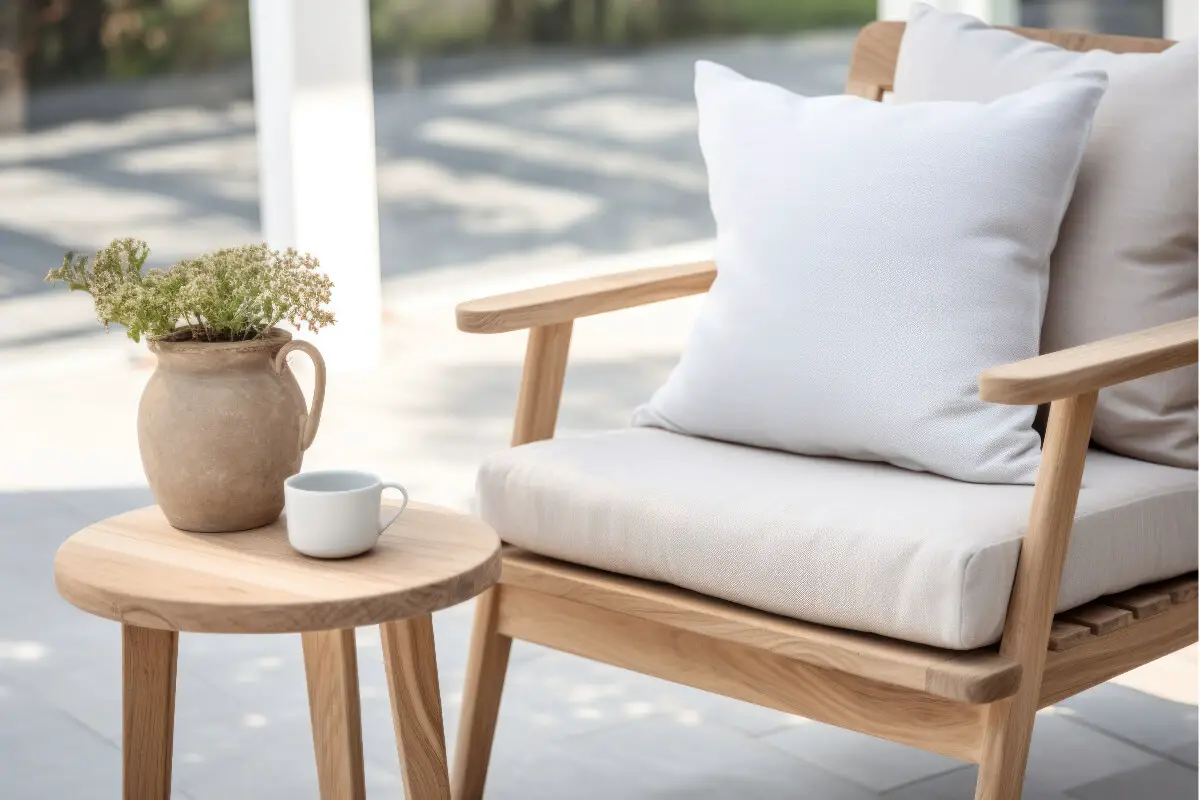In the furniture design universe, the welcoming presence of a solid wood round coffee table is an undeniable favorite. When intricately crafted, it combines aesthetics and functionality, adding charm to living spaces while serving practical purposes. This rich discourse will guide you through the fascinating journey of better understanding the wide range of wood types typically employed to craft these elegant tables.
It will uncover the science behind design techniques and concepts integral to furniture creation, such as balance, symmetry, and proportions. Longevity is central, so we’ll dive deep into tool mastery and safety, which are essential to building a durable piece. Lastly, we will reveal the secrets behind effective finishing techniques and maintenance procedures to enhance your table’s beauty and preserve its integrity.
Table of Contents
- Understanding Wood Types
- Design Techniques and Concepts
- Tool Mastery and Safety
- Finishing and Maintenance Procedures
- Related Content
Understanding Wood Types
Savor the Flavor: The Unique Charm of Different Solid Wood Types in Round Coffee Tables
Crafting furniture from solid wood, precisely round coffee tables unveils a world where artistry, authenticity, and functionality meet. This hobby, an amalgam of exploration and craftsmanship, allows us to discover the true essence of different types of solid wood.
Each wood type gifts a distinct personality and charm to our beloved round coffee tables, making this exploration a journey worth traversing.
First, we dive into the sophistication of oak. One of the most popular hardwoods in America, oak boasts a light to medium brown color accented by an intricate grain pattern.
This robust wood offers unparalleled durability and resistance against wear and tear, guaranteeing a coffee table that will withstand the test of time. Oak is versatile in design, fitting in beautifully, whether rooting for a traditional aesthetic or soothing modern vibes.
A turn towards Walnut exposes us to a realm of rich, dark hues. Walnut may be the epitome of elegance and warmth, its dark brown color deepening over time into a sublime patina.
While it is a hardwood, Walnut works with surprising ease – an attribute that often tilts the scales for beginners starting their coffee table journey. Additionally, Walnut’s resilience affords it resistance to water and scratches – qualities often sought in coffee table construction.
On the other hand, Maple steps into the spotlight with light colors and subtle grain patterns. The creamy white to light reddish-brown tones of Maple embody a sense of minimalistic sophistication.
Known for their incredible strength and shock resistance, Maple-built round coffee tables will serve generations. Despite being a hardwood, it is surprisingly easy to work with, especially for those willing to finesse their skills over time.
Venturing into the exquisite territory of Cherry brings us in touch with a texture beyond comparison. Cherry, with its smooth grain and reddish-brown hue that darkens with age, is often associated with a mature and timeless look. It is not as complicated as its counterparts, making it relatively easy to craft. With its sublime aging process, Cherry is for those who cherish the timeless beauty of wood.
And who could forget about Pine – the choice for those seeking a rustic ambiance? Pine exudes a charming allure with its light yellow color and prominent knots and swirls. Pine is delightfully easy to shape, cut, and craft as a softwood. Over time, Pine develops an appealing aged look that adds a touch of history and character to your round coffee table. Its affordability and availability are the cherry on top for hobbyists.
Each wood type mentioned brings unique characteristics to the crafting table, differing in color, texture, durability, and workability. The choice depends on personal preferences and the aesthetic charm desired for your round coffee table.
Whichever wood you choose, rest assured the journey of creating a masterpiece from scratch will be as delightful as the end product itself. So, let’s pick up those tools and breathe life into some solid wood!
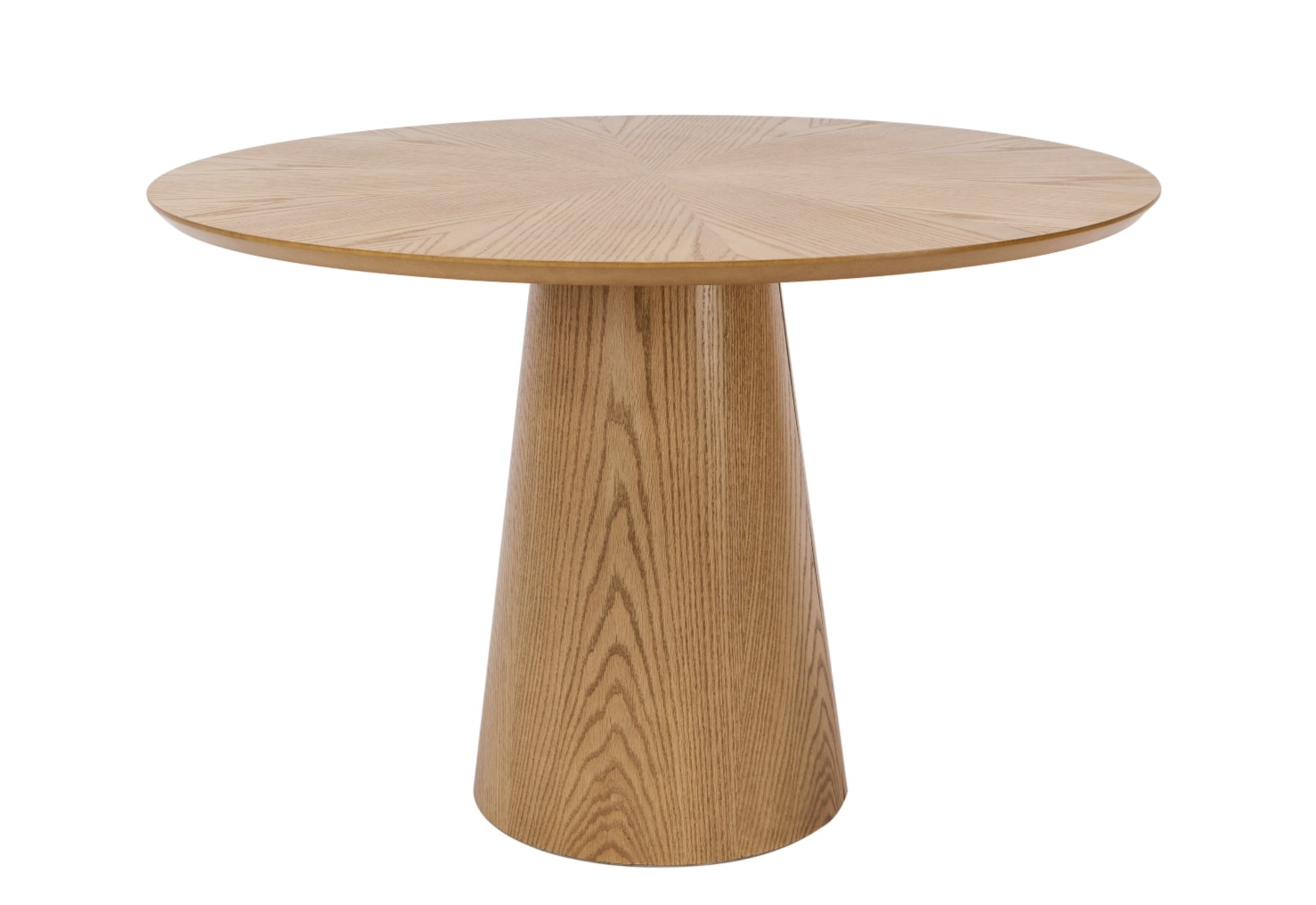
Design Techniques and Concepts
In the fascinating pursuit of designing your own solid wood round coffee table, following the scrutiny of wood types, invoking insights into oak, Walnut, Maple, cherry, and Pine, it’s time to delve into the realm of relevant design elements and techniques. These factors will aid in transforming your unique vision into a tangible, one-of-a-kind piece of furniture.
To start, the proportion of a coffee table should be carefully considered. As a rule of thumb, the height of the table should be about the same as, or slightly lower than, the seat height of your sofa, always favoring the convenience of those using it.
Standalone, it should be able to take center stage with equal grace. Focusing on the dimensions creates a harmonious balance in the room.
However, size isn’t everything when creating your ideal coffee table. The edge and finish of the table can impact the overall aesthetic. A table with a crisp edge offers a clean, modern look, while a rounded edge suggests a vintage charm.
Please pay close attention to the finish, as it affects not only the appearance but the durability of the table. You might choose a polished, glossy finish for a sleek, contemporary feel or a more matte finish for a relaxed, casual vibe.
The style of the leg is another vital design element. The possibilities are endless, from sturdy, straight legs for a traditional look to crossed or interlocked designs for a more modern appeal. Recollect, though, that the leg should be in sync with the overall decor theme of your space.
Another exciting element is the incorporation of unique design features. Consider adding a lower shelf for storage or a drawer for hidden compartment space. You could even consider an extravagant feature like a built-in mini cooler to chill and serve your favorites all from the convenience of the living room.
One cannot overstate the importance of your vision throughout the design process. Drawing and planning tools can help lay out your ideas and visualize the final product. Software like SketchUp can create a 3D model of your coffee table, allowing you to play with dimensions, styles, and wood types.
Finally, while woodworking requires patience and meticulousness, the satisfaction of creating one’s own solid wood round coffee table is incomparable. It is an art form that combines functionality with aesthetic appeal, a testament to your creativity and craftsmanship.
Remember, the richness that a handcrafted wooden piece brings to a room is a combo of your choice of wood type, design elements, and a sprinkle of your personality. Your passion reflects in your work, charming everyone around you. It’s time to curate a masterpiece. Happy woodworking!
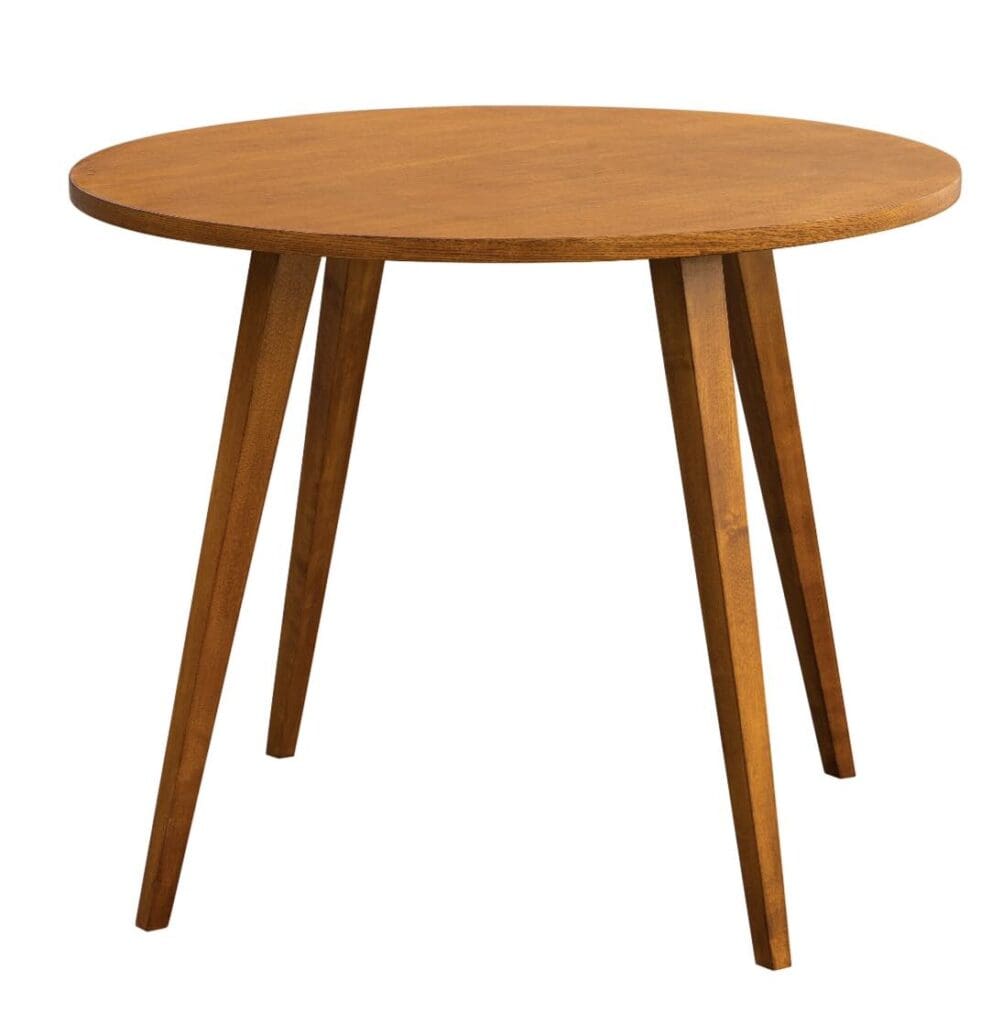
Tool Mastery and Safety
Now, onto the heart and soul of our woodworking project: the essential tools for carving out that perfect round coffee table you’re visualizing. The core philosophy centers around choosing the right tool for the right task, ensuring safety and efficiency in your woodworking journey.
First, discuss the need for a “band saw” or a “jigsaw.” These saws specialize in cutting intricate shapes and curves, making them your best bet for crafting the desired round shape.
Both have their merits – a band saw excels in precision and smoothness, ideal for thicker pieces, while a jigsaw offers better maneuverability for those challenging cuts. Equip yourself with quality blades suitable for the type of wood you’ve chosen, and you’re set for some curvaceous carving!
Next up, let’s not forget the handy “random orbital sander.” This will ensure a beautiful, smooth surface for your coffee table. It comes with different grits – the lower the grit, the coarser the sandpaper. Start with lower grits for initial shaping and then gradually move to higher grits for an elegant, smooth finish to make your masterpiece shine!
Further, a set of “chisels” and a “mallet” can’t be underestimated. They’re helpful for detailed work, refining those curves, and working on the legs. Their sizes range from comprehensive for large-scale removal to small for detailed carving. Hold them correctly (bevel side up) to avoid injuries and maintain longevity.
Then, there’s the “router”. This versatile tool hollows out an area in a relatively complex workpiece and can add many decorative edges. You can shape the tabletop’s edge with the appropriate bit and create intricate designs, giving your table a professionally handcrafted look.
Last but not least, some unsung heroes are the “clamps.” When gluing parts together, especially with some round elements, these steady assistants hold everything in place, enabling precision and ensuring your design translates beautifully into reality.
As we navigate this toolbox, we must ensure effective and safe usage of these tools. Understanding the purpose and function of each tool will reduce the chances of error and prevent potential injuries.
Wear your safety glasses, have good lighting, keep your work area clean, maintain your tools, and, most importantly, know your limits. If a tool or procedure feels uncomfortable, step back, reassess, and seek advice or help.
Finally, nothing replaces practice and experience. Start with scraps of wood to get a feel for the tool. Please have patience, allow yourself to make errors, and learn from them.
Adopting the right mindset – knowing that with each piece of wood, you’re not just creating a practical piece of furniture but crafting a piece of art – will make this journey immensely rewarding. Remember, the magic lies not just in the final piece but also in bringing it to life! Happy woodworking!
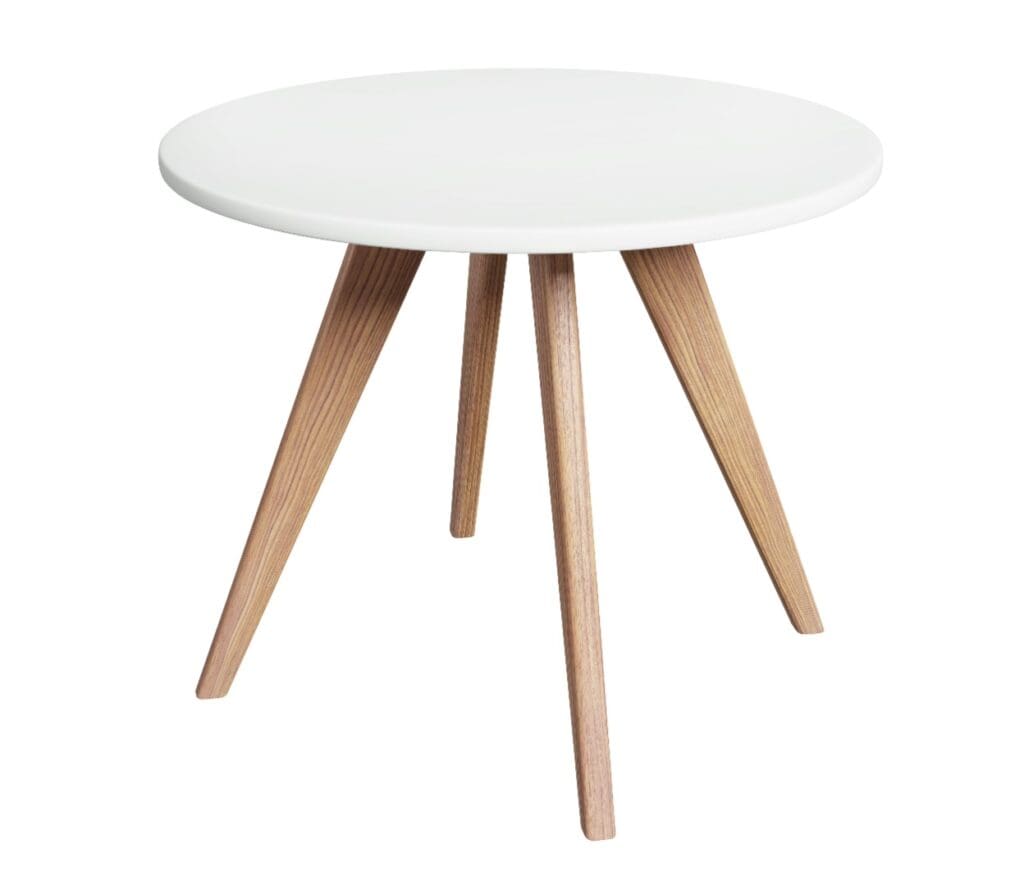
Finishing and Maintenance Procedures
With a solid wood round coffee table, the joy of crafting it from a piece of wood doesn’t end when the last nail is hammered in. One key aspect of owning and cherishing such a unique piece of handcrafted furniture is the finish and upkeep.
The finishing process is essential for the beauty and longevity of your coffee table. Start with selecting the right finish. Each type of finish bears its own merits. Still, acrylic polyurethane is a popular choice for most solid wooden coffee tables due to its exceptional durability, versatility, and protective barrier against moisture and environmental harm.
Ensure the wood is correctly prepared before applying the finish. Sanding is crucial, aiming for a smooth, even surface. Start with coarse-grit sandpaper and work up to a fine-grit, always sanding in the direction of the grain. Dust off the wood surface before each new grit size, ensuring no scratching occurs.
After sanding, condition the wood. This is particularly important for blotch-prone Pine, cherry, and maple woods. A pre-stain wood conditioner applied liberally and left to dry before staining will allow for a more uniform stain absorption and a richer, more even color.
Next comes the staining process. Use a staining pad, rag, or brush to apply the stain. Always follow the wood grain while applying for a smooth, professional look. To get lighter shades, wipe off the stain almost immediately. For darker shades, please wait a few minutes before wiping it off. Always let the stain dry thoroughly before adding a coat or the top finish.
Top finishes like polyurethane sealants are best applied with a high-quality synthetic brush. Always remember to apply thin coats rather than one thick one to ensure better adherence and longevity of the finish. Let the first coat dry before lightly sanding with a fine-grit sandpaper, then apply the following coat. Repeat for a minimum of two coats.
Maintenance of your solid wooden coffee table doesn’t have to be a taxing task. Make sure to clean the surface regularly with a soft, dry cloth. Avoid placing hot items directly on the wood, as it can cause the finish to blister. Use coasters or mats to guard against water stains or rings.
Repairing minor scratches does not necessitate refinishing the entire piece. Repair pens or kits containing color-matched stains can fill in scratches, restoring the piece’s original beauty.
A deep clean and waxing every six to twelve months would suffice for the upkeep of the table. Avoid using commercial sprays as they might contain damaging silicon oils. Instead, opt for quality paste wax, which nourishes the wood and adds an extra barrier of protection against wear and tear, enhancing the piece’s luster.
Remember, the heart of this process lies in creating a beautiful piece of bespoke furniture and its preservation, ensuring it can be loved and admired by future generations.
The joy and satisfaction in this hobby will only amplify with each passing year as your coffee table ages gracefully, reverberating the essence of your craftsmanship in every grain and knot.
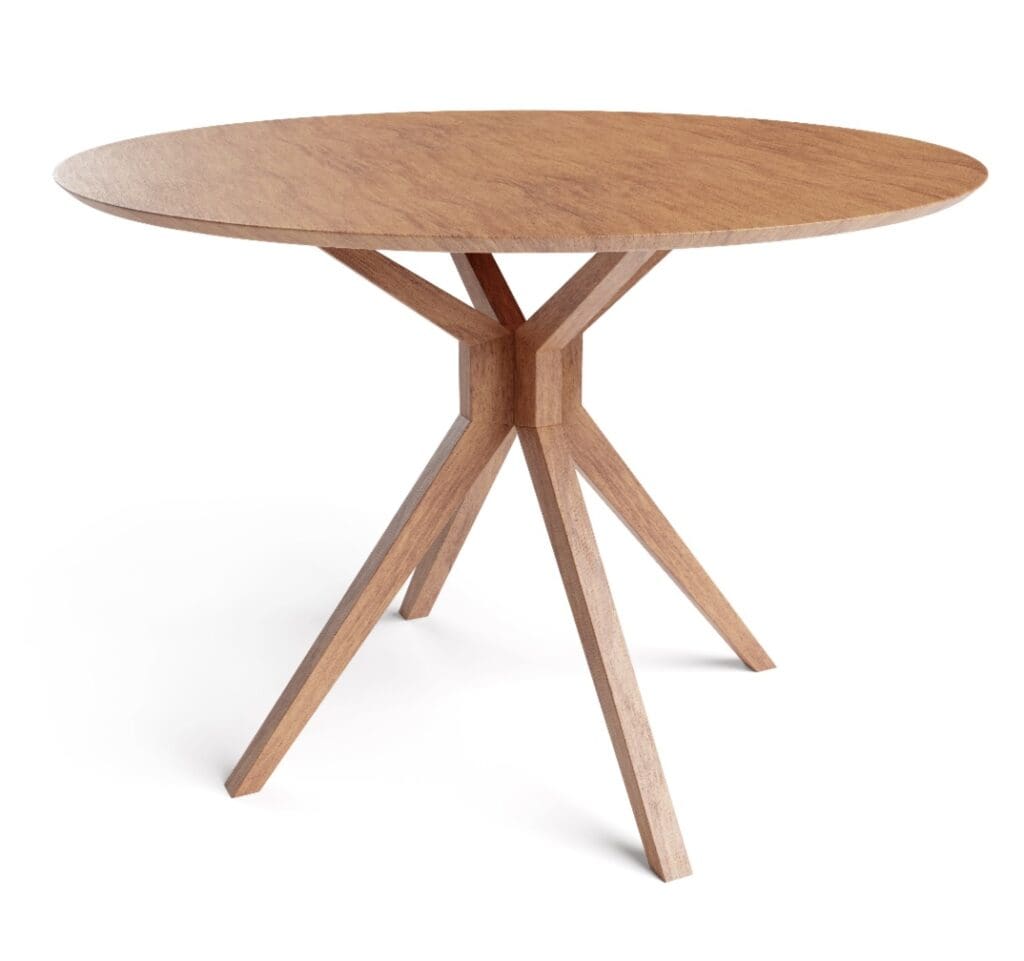
Crafting a solid wood round coffee table is as rewarding as it is intricate. As we have delved into the nuances of wood types, design concepts, tool handling, and maintenance procedures, we have unfolded the narrative of a piece that is more than just a functional furniture item. It’s a testament to timeless artistry and meticulous craftsmanship.
The adventure does not end with the last layer of polish or the final tightening of a screw. It begins a new chapter: maintaining and caring for the piece to provide uninterrupted service and aesthetic appeal.
By mastering these elements, one can ensure that this cherished piece, the round coffee table, will endure the test of time, becoming not just a focal point in your living space but a narrative piece that tells a story of dedication, skill, and beauty.
If you’re interested in how Mondoro can help with your coffee table, tea table, or any custom design you have in mind – we would love to talk to you about how we can help you.
Find out more about how Mondoro can help you create, develop, and manufacture excellent home decor and furniture products – don’t hesitate to contact me, Anita. Check out my email by clicking here or become a part of our community and join our newsletter by clicking here.
Mondoro gives out a FREE Lookbook to anyone interested. You can receive a copy of our latest Lookbook by clicking here.
Listen to our Podcast called Global Trade Gal. You can find it on all major podcast platforms. Try out listening to one of our podcasts by clicking here.
Subscribe to our Mondoro Company Limited YouTube Channel with great videos and information by clicking here.
Related Content
Coffee Table Vs. Tea Table: An In-Depth Look
Coffee and tea tables embody different aesthetics, serve distinct functions, and carry a unique heritage, making the selection process a nuanced journey. While they may seem similar at first glance, delving into their specific attributes uncovers an intriguing world of contrasts and possibilities.
You can discover more by reading Coffee Table Vs. Tea Table: An In-Depth Look by clicking here.
What Is Rubber Wood? Origin, Source, Processing – All About
Rubber wood’s rise in demand can be attributed mainly to its sustainability, affordability, and attractive appearance. In this comprehensive look at rubberwood, we’ll delve into what makes this material unique, its origins, benefits, applications in furniture making, and some tips for its care and maintenance.
You can learn more by reading What Is Rubber Wood? Origin, Source, Processing – All About by clicking here.
Tempered Glass Vs. Regular Glass, Pros, And Cons
Glass is a popular material used in various applications, from home decor to the automotive industry. It is a versatile and beautiful material, but not all glass is created equal. Tempered glass and regular glass are two popular types of glass that serve different purposes and have different strengths and uses.
You can learn more by reading our blog Tempered Glass Vs. Regular Glass, Pros, And Cons by clicking here.

